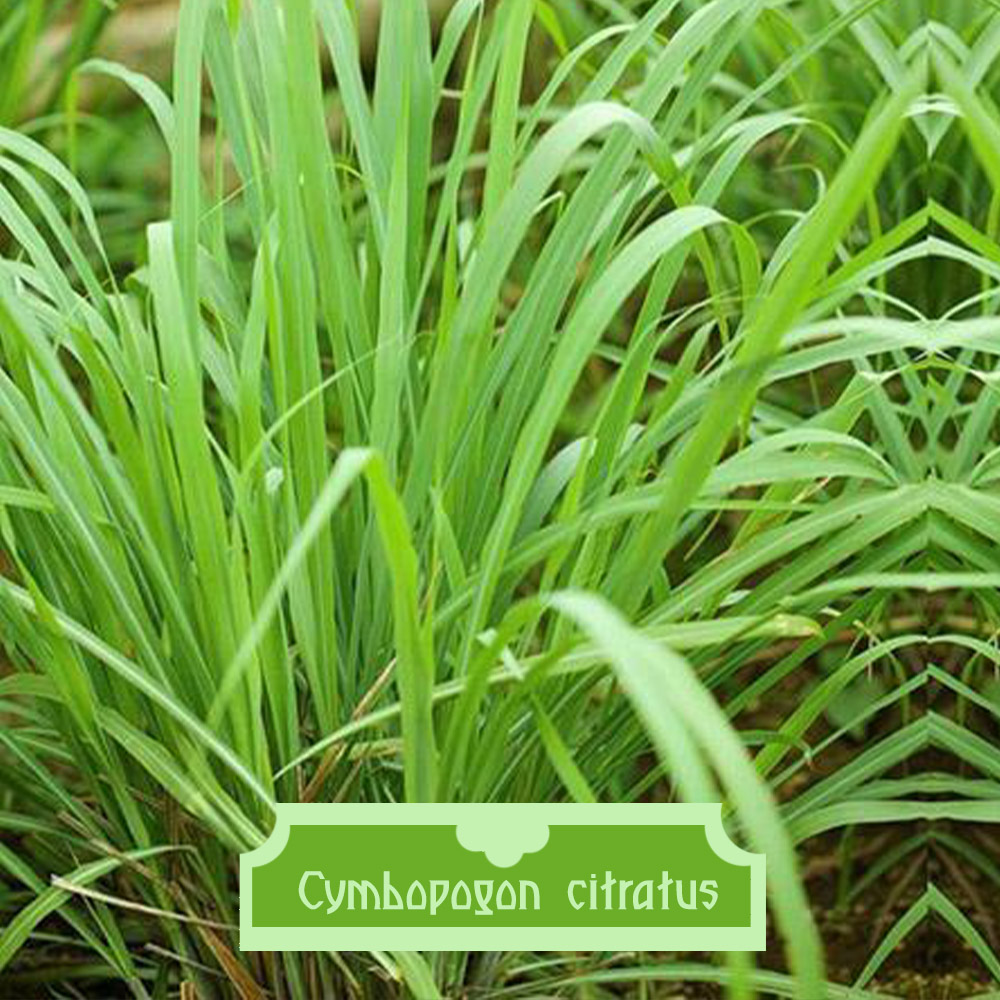No products in the cart.
Cymbopogon citratus
South East Asian herb
Rated 0 out of 5
0 customer reviews
5,50 €
Only 9 item(s) left in stock!
Tags: aromatique, comestible, feuillage persistant, perennial, persistant
SKU: pda133
Category: Better Indoors, Culinary, Distillations, Fragrant, Frost Hardy, Ground Cover, Medicinal

Cymbopogon citratus
5,50 €
Only 9 item(s) left in stock!
Cymbopogon citratus, commonly known as lemongrass, is a perennial tropical grass cultivated for its aromatic leaves.
It is widely cultivated for its intensely aromatic leaves, which release a strong lemon scent when crushed, making it highly valued both for culinary and medicinal uses.
This grass forms tall, dense clumps, often reaching heights of one to two meters.
Its long, narrow leaves grow upright from the base, creating a striking, grassy mound.
Small, inconspicuous flowers appear at the tips of the stems, though they are rarely of interest because the plant is primarily grown for its leaves and essential oils.
Cymbopogon citratus grows best in well-drained, fertile soil with a slightly acidic to neutral pH and prefers full sun exposure.
While it requires regular watering to establish, it is quite drought-tolerant once mature.
👨🌾GARDENING TIPS👨🌾: Cymbopogon citratus
-
- The species is sensitive to low temperatures, and prolonged exposure to temperatures below 10 °C may result in plant mortality.
- Well-drained sandy loam soil with a pH range of approximately 5.5 to 7.5 is considered optimal.
Learn more about gardening with Lemongrass:
Learn more about cooking with Lemongrass (from the wonderful Everyday French chef, Meg Bortin) :
The Tales & The Botany: Cymbopogon citratus
Cymbopogon citratus is native to South Asia and Maritime Southeast Asia (Malesia). After World War I, lemongrass was introduced to Madagascar, South America, and Central America.
Lemongrass is widely used in Southeast Asian cuisine, adding its distinctive citrus flavor to teas, soups, curries, and marinades.
But beyond the kitchen, it has uses in traditional medicinal uses – a calming tea, a digestive aid, and a mild fever reducer.
Many of the perfumes or aromatherapy kits on the market have a note of lemongrass in them as well.
On top of all of that, it is an extremely efficient natural insect repellent.
Citronellol is an essential oil constituent from Cymbopogon citratus, Cymbopogon winterianus, and Lippia alba.
Citronellol has been shown to lower blood pressure in rats by a direct effect on the vascular smooth muscle leading to vasodilation > indicating a possibility that this study can be reproduced in humans.
🌍 Ecology & Adaptations
Native to India and Southeast Asia, lemongrass thrives in tropical climates, favoring well-drained soils and full sun. Adaptations include:
-
-
💧 Drought resistance
-
🌞 Sun-loving
-
🍃 Perennial growth habit
-
Other Names
Lemongrass
Origin
India and Southeast Asia
| Weight | 0,4 kg |
|---|---|
| Exposure | Full Sun |
| Soil | Dry, Well-Draining |
| Frost Tolerance | NONE |
| Size | 1m H x 1m W |
Reviews
0
Rated 0 out of 5
0 customer reviews
5
0
4
0
3
0
2
0
1
0
Only logged in customers who have purchased this product may leave a review.
You may also like…
Houttuynia cordata ‘Chameleon’
A fragrant and ornamental perennial with color-shifting foliage
A fragrant and ornamental perennial with color-shifting foliage
Rated 0 out of 5
Origanum vulgare Thumbles Variety
A dense cushion of golden leaves that transition to a light green hue in summer
A dense cushion of golden leaves that transition to a light green hue in summer
Rated 0 out of 5
Related Products
Tradescantia Blushing Bride
Gorgeous blushes of pink and white that appear in the coldest nights.
Gorgeous blushes of pink and white that appear in the coldest nights.
Rated 0 out of 5
Trachelospermum asiaticum ‘Ogon Nishiki’
Jasmine with colorful foliage and lovely white flowers in summer
Jasmine with colorful foliage and lovely white flowers in summer
Rated 0 out of 5
Artemisia Valerie Finnis
A semi-evergreen, aromatic variation on the theme of Artemisia.
A semi-evergreen, aromatic variation on the theme of Artemisia.
Rated 0 out of 5
Hieracium maculatum Leopard
A native perennial with blue-green leaves and a tall yellow flower
A native perennial with blue-green leaves and a tall yellow flower
Rated 0 out of 5
Stachys byzantina
Silky white-grey leaves and tall striking flowers
Silky white-grey leaves and tall striking flowers
Rated 0 out of 5
Delosperma cooperi
A dwarf perennial known for its vermillion colored flowers
A dwarf perennial known for its vermillion colored flowers
Rated 0 out of 5
Glechoma hederacea
A sweet smelling ground cover, producing little blue flowers all summer long.
A sweet smelling ground cover, producing little blue flowers all summer long.
Rated 0 out of 5
Vinca minor
Looping elegance and ability to form a low flowering ground cover
Looping elegance and ability to form a low flowering ground cover
Rated 0 out of 5
Euphorbia myrsinites
Known for its draping form of silver-gray foliage and radiant blooms.
Known for its draping form of silver-gray foliage and radiant blooms.
Rated 0 out of 5
Cerastium tomentosum var. columnae
A grey-green spreading ground cover from the mountains.
A grey-green spreading ground cover from the mountains.
Rated 0 out of 5
Hellebore argutifolius
Winter flowering perennial with marbled blue-green leaves
Winter flowering perennial with marbled blue-green leaves
Rated 0 out of 5
Echinacea purpurea
A perennial with purple flowers all summer long
A perennial with purple flowers all summer long
Rated 0 out of 5
Sedum album
A low, multi-color ground cover.
A low, multi-color ground cover.
Rated 0 out of 5
Erigeron kavinskianus
A daisy-like carpet of flowers
A daisy-like carpet of flowers
Rated 0 out of 5
Kalanchoe daigremontiana
A toothy succulent from Madagascar, known as the Mother of Thousands.
A toothy succulent from Madagascar, known as the Mother of Thousands.
Rated 0 out of 5
Euphorbia cyparissias Clarice Howard
A Euphorbia that resembles a soft little cyprus tree
A Euphorbia that resembles a soft little cyprus tree
Rated 0 out of 5
Tanacetum densum subsp amani
A shrublet composed of soft, finely divided silvery gray-white leaves.
A shrublet composed of soft, finely divided silvery gray-white leaves.
Rated 0 out of 5
Mentha x piperita ‘Chartreuse’
A spicy mint, known for its use in the production of liqueurs and herbal teas.
A spicy mint, known for its use in the production of liqueurs and herbal teas.
Rated 0 out of 5
recent view product
Achillea ptarmica Boule de Neige
White pompom flowers to attract bees to your garden all summer long.
White pompom flowers to attract bees to your garden all summer long.
Rated 0 out of 5
Thymus longicaulis ‘Odoratus’
A fast-growing ground cover with strongly aromatic leaves, and bright pink flowers in early summer.
A fast-growing ground cover with strongly aromatic leaves, and bright pink flowers in early summer.
Rated 0 out of 5
Geranium x cantabrigiense ‘Biokovo’
A creeping geranium with color-shifting, aromatic leaves
A creeping geranium with color-shifting, aromatic leaves
Rated 0 out of 5
Heuchera ‘Prince’
Wonderfully ruffled dark purple/black foliage
Wonderfully ruffled dark purple/black foliage
Rated 0 out of 5
Crassula tetragona
A succulent with dark green, sword-shaped leaves.
A succulent with dark green, sword-shaped leaves.
Rated 0 out of 5


















































There are no reviews yet.